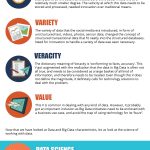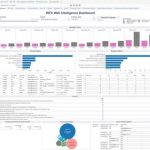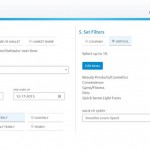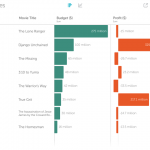giant information’s big Organizational problems
March four, 2015
As consumers, our lives and identities change into increasingly digitized day by day. The more time we spend on the net, the extra knowledge we produce. In 2014, fb users shared 2,460,000 pieces of content material, YouTube users uploaded 72 hours of new video, and Yelp users posted 26,380 opinions. These facts are usually not per week and even per day — they’re per minute (Domo)!

With every on-line buy, media stream, or clickthrough, customers are generating new knowledge factors that help define their on-line identities. For businesses, this giant data can be utilized to create more personalized and relevant experiences, which result in higher conversion rates and earnings (Jupiter research).
alternatively, unlocking the ability of this information to drive business selections has proven especially troublesome. marketers, in particular, consider data to be their most underutilized asset (Teradata). The sheer amount of knowledge customers produce is definitely a challenge, but there are other hurdles preventing brands from being extra information-driven.
Let’s dive deeper into two of huge knowledge’s largest organizational problems, and the steps businesses can take to solve them.
Lack Of Marketer-friendly Insights
on every occasion a client registers with a trade using either traditional varieties or social authentication, after which proceeds to take certain moves on the brand’s site or native mobile software, the consumer is giving the group get admission to to valuable first-celebration, permission-based identity knowledge.
on the other hand, not all marketers have an intuitive option to make feel of the entire data. if truth be told, a brand new survey unearths that simplest sixteen% of respondents agree that all staff have a user-friendly method to conduct relevant knowledge analyses via, for instance, personalized feeds and dashboards (eMarketer).
with no visual illustration of the exabytes of shopper data being created and captured, brands face the risk of by no means with the ability to leverage wealthy knowledge to power strategic trade and marketing selections.
firms want to enforce an insights dashboard in a position to robotically aggregating, organizing, and providing purchaser identity data in a technique that may be utilized by way of entrepreneurs with out the necessity for messy SQL queries and time-consuming IT requests. With such a instrument in situation, companies could simply segment, for example, the top pursuits of shoppers who’ve made purchases of $ one hundred twenty or more.

The custom audience segments can then be imported into other advertising and service applications comparable to email systems and advice engines to create hyper-relevant messaging, purchaser journeys, and user experiences.
no longer only does this level of individualized advertising merit clients, however 45 p.c of survey respondents agree that offering staff with larger get entry to to the info they want leads to a rise within the quality and speed of undertaking execution (eMarketer).
Departmental information get entry to Constraints
without having a visual representation of purchaser data is surely a hinderance, simply 27 % of survey respondents agree that every one staff have get right of entry to to the information they need in the first place. as well as, 65 % of respondents agree that some departments have significantly better get entry to to information than others.
a part of this fragmentation can be attributed to information being housed in several silos. the same trade can have multiple databases to retailer purchaser information — one for website interactions, one for email communications, one for retail operations, and many others. This separation of data into individual silos is fighting manufacturers from organising a singular view of their consumers, and maintaining the organizational roadblocks to easy information get admission to.

through enforcing an advanced dynamic-schema database capable of normalizing and reconciling both traditional structured and unstructured social data, companies can home all consumer knowledge in one unified position. keeping all purchaser identification information housed in a single vicinity impedes inside miscommunication in addition to disjointed interactions with buyers.
The trade advantages of greater knowledge availability and organization are abundantly clear, as forty eight p.c of survey respondents agree that collaboration throughout business gadgets and departments increases. moreover, 42 percent of respondents agree that higher information availability has ended in decisions in any respect ranges of the organization being made sooner.
although the use of big knowledge unquestionably has its challenges, the brands able to harnessing its energy stand to reap unbelievably rewarding rewards. businesses using purchaser knowledge are discovering 23x higher probability of customer acquisition, 6x better likelihood of customer retention, and 19x better probability of profitability (BizReport).
To research more about how businesses are leveraging visible consumer information insights and evolved databases to unlock the potential for giant information, download our free guide “attaining a Single customer View: The Holy Grail for entrepreneurs.”
Digital & Social Articles on industry 2 community
(138)














